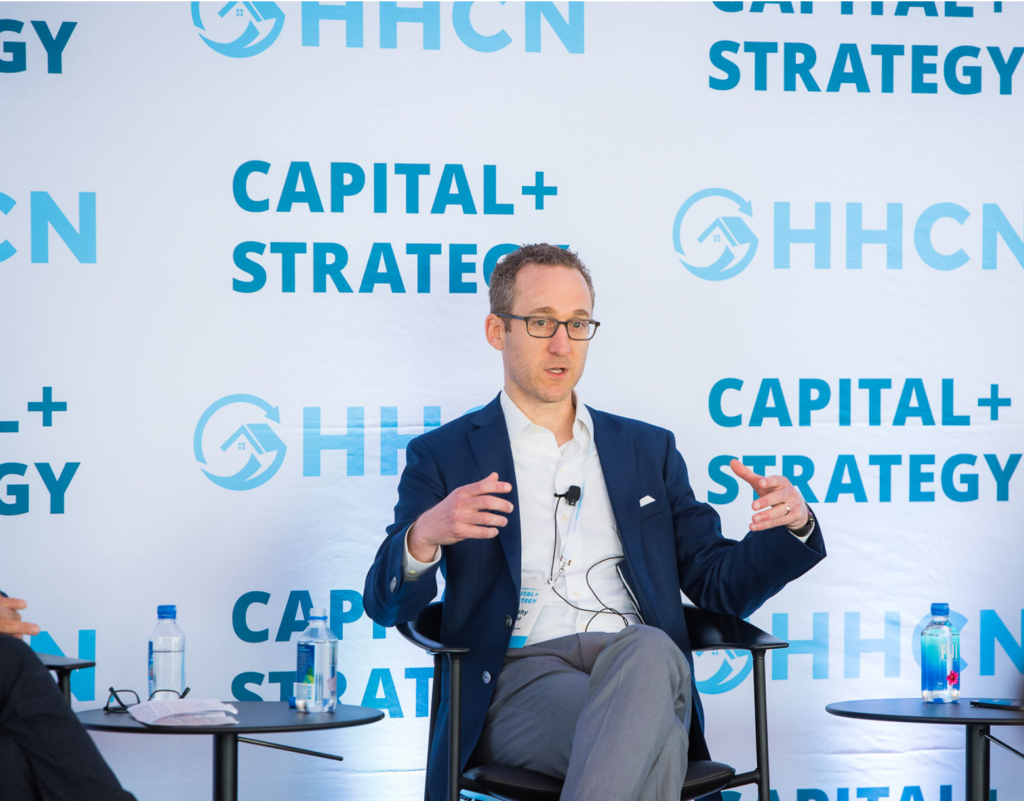As demand for personal home care stays high, providers are keeping a close eye on the shrinking margin between pay and billing rates.
Bill rates for home care have steadily risen over the past several years, in large part due to those growing pay rates for workers. In 2022, home care leaders have been vocal about how big of a threat that poses to the industry and to less well-off senior populations.
However, some provider leaders are anticipating bill rates will eventually hit a ceiling. What that means for pay rates will be something to consider moving forward.
“I am going to be pretty fascinated by what happens with the bill and pay rate dynamics within the market over the next year,” Care Advantage CEO Tim Hanold told Home Health Care News. “With private-pay rates, it seems like recently you can’t find the top of the market, which has always felt disturbing to me, because it’s not cheap to pay for care in the home.”
The Virginia-based Care Advantage provides a mix of personal care support and skilled services in over 40 locations in the mid-Atlantic.
Looking ahead to 2023, Hanold sees a path for less pressure within the caregiver labor pool. If providers are more comfortably staffed with caregivers, bill rates and pay rates should theoretically level off.
“If the bill rate cools off, then wages have to cool off,” Hanold said. “Maybe we’re not there yet, but there does have to be a leveling out. The macroeconomics reality is that these things have to level off.”
In order to keep a respectable gross profit margin, home care providers should be monitoring both of those rates in the next year.
‘Margin erosion’
Some already are making changes to how they make those adjustments. For years, the Moorestown, New Jersey-based Bayada Home Health Care adjusted pay rates on an annual basis.
During the spring of 2021, the home-based care provider started to notice “margin erosion,” forcing the company to take a look at those numbers on a quarterly basis.
“That way, we could try to keep up with what was a faster-moving labor environment where our caregivers were just demanding a higher and higher rate,” Matt Kroll, president of assistive care services with Bayada, told HHCN. “Which, from our perspective, we’re really supportive of. But from a business operational perspective, it certainly changed the way we were trying to manage the speed with which things were increasing.”
Bayada has about 360 locations in 23 states, as well as offices in various other countries across the world. Like Care Advantage, Bayada is both a provider of home health care and personal care services.
Since 2019, pay rates are up 23% for Bayada, Kroll said. In that same time period, bill rates increased by 20%.
“We’ve been aggressively moving our bill rates as well, especially in the private sector, to try and keep up with that,” Kroll said. “Every time I say I don’t think pay rates can go higher, they do. We’re expecting rates to flatten out a bit. From the early 2000s until about 2015, bill rates and pay rates were generally pretty flat and I think we’ve been in a catch-up period that’s been accelerated the past couple of years. I think we’ll probably see some amount of leveling off. I think the question is, ‘At what point next year?’”
Bayada has not noticed a major shift in key data points, such as average hours per client, per week and length of stay. But if pricing has increased by 20%, there’s reason to monitor those numbers more closely to see if the cost of services are impacting those outcomes, Kroll said.
Bayada’s effort to keep a strong profit margin will be driven by technology innovation, it hopes.
“Our system now is that our caregivers go into the home for a certain number of hours and we bill for a certain number of hours,” Kroll said. “Now, we’re more open to the idea of introducing technology as a way to support our clients. Today, we’re in the home sometimes 24 hours a day, seven days a week. Is there a way for us to support them without someone in the home for all 24 hours? We’re in the early stages of it, but we’re thinking about technology as a cost-effective alternative.”
One thing Kroll and Hanold agree on is that at the end of the day, in-home care is still the most cost-effective and preferred space for clients.
“Even with our pricing going up so much, it’s still less expensive to be home than it is in the nursing home,” Kroll said. “I’d also like to stress the fact that I don’t think home care gets enough credit for being the most flexible option. Most providers that I know have a flexible model where if you’re not getting services for a week, you’re not paying for it.”
Looking ahead, while health care isn’t recession-proof, it does have a softer landing in tough economic times than other industries, Hanold said.
“We’re on the right side of the health care system: care in the home,” he said. “It’s the most cost-effective, the setting of choice, all of that. When it comes to state’s budgets, there’s real ROI to keeping people at home, so that’s important. When it comes to families and their private-pay dollars, typically there’s a cost saving for them too, instead of going to a facility.”
When factoring in all of that, Hanold said that means continued, sustainable work for caregivers.
Moving forward, he believes there will be some fluidity regarding the push-and-pull nature of bill and pay rates.
“How much would an adult son or daughter bill-rate payer really take on?” Hanold said. “I believe we are going to get to a place where there is some elasticity around that. You can’t just keep pushing that onto families in that type of way, going into a recession.”




